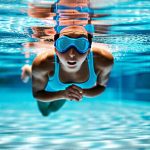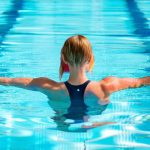The human body is an incredibly adaptable system, constantly adjusting to external forces and internal states. One fascinating aspect of this adaptation relates to how we perceive and react to fluid dynamics – specifically, the sensation of movement through water, often referred to as “stream speed.” This isn’t simply about swimming faster; it’s a complex interplay between posture, body position, drag reduction, and neurological feedback loops that determine our efficiency in aquatic environments. Understanding how different postures impact stream speed is crucial not only for competitive swimmers but also for anyone engaging in water-based activities like snorkeling, diving, or even just enjoying recreational swimming. It’s about harnessing the physics of fluid flow to minimize resistance and maximize propulsion.
Stream speed perception isn’t a direct measurement of velocity, though it correlates strongly. Instead, it’s our subjective experience of how quickly we are moving through water. This perception is heavily influenced by proprioception – our sense of body position – and the feedback we receive from hydrodynamic forces acting on our skin and joints. A streamlined posture minimizes turbulence and drag, resulting in a smoother, faster feeling even if actual velocity isn’t significantly higher. Conversely, a less efficient posture creates more resistance, leading to a sensation of being slowed down or encountering greater effort for the same amount of movement. This article will delve into the nuances of how postural changes directly influence stream speed perception and performance.
Posture and Hydrodynamic Drag
Hydrodynamic drag is arguably the most significant factor impacting stream speed. It’s the resistance encountered when moving through a fluid, and it comes in several forms. Form drag, arising from the shape of an object as it disrupts water flow, accounts for a substantial portion of total drag, especially in less streamlined positions. A wider profile or uneven surface creates more turbulence and increases form drag. Friction drag results from the viscosity of the water itself; even a perfectly shaped object experiences some friction as it moves through the fluid. Finally, there’s wave drag, which becomes significant at higher speeds, caused by energy lost in creating waves. Posture directly influences all three types of drag.
Achieving a streamlined posture aims to minimize form drag specifically. Think about a torpedo or a dolphin – their sleek shapes are designed for efficient movement through water. We can emulate this principle by aligning the body along its longest axis, reducing frontal surface area and minimizing turbulence. This involves keeping the head down (without excessive neck strain), maintaining a horizontal body position, and tightening core muscles to create a rigid but flexible form. A common mistake is allowing the hips to drop or rotate, which significantly increases drag. It’s not about stiffly holding a static pose; it’s about dynamic streamlining – actively adjusting posture to maintain optimal alignment while moving.
The impact of posture extends beyond just shape. Body position affects how water flows around different body parts. For example, extending arms fully forward and overlapping them reduces frontal surface area and creates a smoother flow. Conversely, letting arms drop or splay out increases drag substantially. Similarly, keeping legs together and slightly bent minimizes resistance compared to wide-kicking styles that generate more turbulence. Effective streamlining isn’t just about reducing what blocks the water; it’s about shaping the water around you. A key component of improving stream speed is consistent practice with feedback from a coach or video analysis, focusing on identifying and correcting postural inefficiencies.
Refining Streamline: Drills and Techniques
Developing a strong streamline isn’t intuitive for most people. It requires deliberate practice and focused attention to body positioning. Here are some drills that can help refine your technique:
- Wall Push-offs: Start in a streamlined position with hands extended, arms overlapping, head tucked, and core engaged. Push off from the wall and focus on maintaining the streamline for as long as possible. Gradually increase the distance you travel while preserving the form. Pay attention to any areas where drag increases (e.g., hips dropping).
- Streamline with Fins: Using fins allows you to maintain a streamlined position more easily, focusing specifically on body alignment and core engagement without worrying about propulsion. This isolates the streamlining aspect of swimming.
- Partner Feedback: Have a partner observe your streamline from different angles (side, front) and provide feedback on areas for improvement. They can identify postural deviations that you might not be aware of.
These drills are most effective when combined with video analysis. Seeing yourself swim allows you to objectively assess your posture and pinpoint specific areas needing adjustment. Remember, a good streamline isn’t just about achieving the ‘perfect’ pose; it’s about finding a sustainable and efficient position that minimizes drag for your body type and swimming style.
The Role of Core Engagement
Core strength is fundamental to maintaining a streamlined posture and maximizing stream speed. A strong core acts as a stabilizing force, preventing unwanted rotation or dropping of the hips. Without adequate core engagement, the body tends to collapse into less efficient positions, increasing drag and reducing propulsion. It’s not just about having ‘six-pack abs’; it’s about developing deep stabilization muscles that support the spine and pelvis.
Exercises that target the transversus abdominis – a deep abdominal muscle responsible for core stability – are particularly beneficial. These include planks, bird dog exercises, and dead bugs. However, simply strengthening the core isn’t enough. You must learn to actively engage these muscles while swimming. This requires conscious effort and practice. Think about drawing your navel towards your spine and tightening your lower abdominal muscles throughout each stroke cycle.
Furthermore, core engagement plays a crucial role in rotational movements during strokes like freestyle or backstroke. A stable core allows for efficient transfer of power from the upper body to the lower body, enhancing propulsion. A weak core leads to wasted energy and inefficient movement. Integrating core activation into your swimming routine is essential for achieving optimal stream speed and preventing injury.
Neuromuscular Feedback & Proprioception
As mentioned earlier, stream speed perception isn’t solely about physics; it’s also heavily influenced by our nervous system. Proprioception – the body’s ability to sense its position in space without relying on visual cues – is vital for maintaining a streamlined posture and adjusting to hydrodynamic forces. When you swim, your brain constantly receives feedback from receptors in your muscles, joints, and skin about how water interacts with your body. This feedback allows you to make subtle adjustments to maintain alignment and minimize drag.
Developing proprioceptive awareness takes time and practice. Drills that emphasize body positioning and movement quality can help improve this awareness. For example, closing your eyes while swimming (under safe conditions) forces you to rely more on internal cues rather than visual input. This enhances your ability to ‘feel’ the water and adjust your posture accordingly.
Moreover, consistent feedback from a coach or video analysis can accelerate the learning process. They can identify postural inefficiencies that you might not be aware of and provide guidance on how to correct them. The goal isn’t just to know what a streamlined position looks like; it’s to feel it. This requires developing a strong mind-body connection and cultivating an awareness of the subtle sensations associated with efficient movement through water.
Beyond Streamline: Posture During Propulsion
While streamlining is essential for minimizing drag, posture also plays a critical role during propulsion phases of swimming strokes. The angle of entry, body rotation, and arm/leg movements all significantly impact how effectively you generate forward momentum. For instance, in freestyle, a high elbow catch with proper shoulder rotation maximizes the propulsive surface area of the forearm and hand, while a flat or collapsed arm position reduces efficiency. Similarly, a strong kick initiated from the hip (rather than the knee) generates more powerful propulsion with less energy expenditure.
Poor posture during propulsion often results in wasted energy and reduced stream speed. A common error is dropping the elbow during the pull-through phase of freestyle, which weakens the propulsive force and increases drag. Another mistake is over-rotating the body, leading to an imbalance between arm movements and a loss of streamlining. These postural inefficiencies can be corrected through focused drills and coaching feedback.
Effective propulsion isn’t just about strength; it’s about technique and posture. It’s about coordinating body movements to maximize propulsive forces while minimizing resistance. This requires developing a deep understanding of the biomechanics of swimming and practicing consistently with attention to detail. Consider incorporating exercises that specifically target muscle imbalances or weaknesses that may be contributing to poor posture during propulsion.
This exploration highlights how intimately connected our experience of stream speed is to our postural control, hydrodynamic principles, and neurological awareness. By focusing on these elements – streamlining, core engagement, proprioception, and efficient propulsion – swimmers of all levels can unlock their potential and move through the water with greater ease and speed.





















